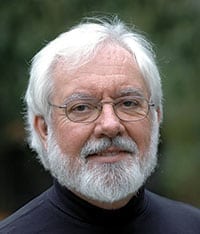Do you know America’s “First Genius?”
May 18, 2015By Ken Gasque
Most people don’t know the name of the man credited with the most practical and successful inventions than any other American. He sold most of his inventions for relatively small amounts of money compared to the returns realized by the people who bought them. Why did he sell? He seemed to lose interest once the device was invented and he always wanted a quick return. Also, he lacked the power of conviction and did not have faith in his ideas.
Walter Hunt was born in 1796 in Martinsburg in upstate New York. Industrial historians consider Walter Hunt to be America’s “First Genius” yet he died in 1859 relatively unknown and some say in poverty. His son did manage to sell some of his patents but was not able to create any lasting memory of his father.
Some of Walter Hunt’s inventions are still in use today—the safety pin and fountain pen. His other inventions were the repeating rifle (patented by Winchester), the sewing machine (patented by Howe), flax spinner, knife sharpener, streetcar bell, hard-coal-burning stove, artificial stone, street sweeping machinery, the velocipede and the ice plough.
He received patents for a nail making machine, bottle stoppers, paper shirt collars, and a non-explosive lamp. He invented many other things for which he did not receive a patent, including an antipodean apparatus that could be attached to shoes so a person could walk upside down on a ceiling. Circus performers used this invention as late as 1937. Walter Hunt was a prolific inventor.
Walter Hunt’s biggest failure was not getting a patent on his sewing machine. It’s believed that he felt it would put seamstresses out of work. Or maybe he just lost interest in it. Twenty years after he built the first sewing machine prototype out of wood, and his brother replicated it out of metal, Elias Howe applied and received a patent for the sewing machine.
After Elias Howe’s introduction of the sewing machine to the market Walter Hunt tried unsuccessfully to gain financial reward for his work through the courts. Hunt convinced Isaac Singer, a bitter rival of Howe’s, to support and back him in his litigation against Howe. He convinced the judge that he did in fact design and build the first sewing machine; but he did not have any of the original plans or even the prototype machine as evidence because all had been lost or discarded. Howe won. Singer did not honor his commitment and Hunt sued him.
Although Isaac Merritt Singer claimed that he had invented the first working sewing machine, that wasn’t true. What he did was to improve it. His talent was to take the best of what had existed and make it better. He did patent dozens of improvements to sewing machines and bought numerous others to tighten his grip on the market.
Isaac Merritt Singer came from poverty and had street smarts and charisma. He spent a decade working as an actor in a traveling show. He was a promoter. Singer’s real genius was marketing. He built a marketing company, which sent salesmen all over the country introducing the product. Singer promoted the Singer Sewing Machine with such pizzazz and flare that it became the number one brand sewing machine in the world. Singer’s marketing used mass give-a-ways, beautiful models, showrooms, and sewing instructors. He pioneered installment-purchasing plans and accepted trade-in. His marketing was as innovative as his product.
Singer and Howe eventually worked together to form a monopoly and to become two of the richest men in America.
Hunt was a genius that could see a solution to a problem but he was not a marketer. He could not see the potential of his inventions to build wealth.
We all have good ideas. Maybe we don’t invent something as simple and useful as the safety pin. But who knows because most of us share a shortcoming that Walter Hunt had. We don’t have the commitment or confidence to pursue our ideas and follow through. We quit. We simply forget about the idea. We say it wouldn’t have worked anyway. We quit before we even try. How many people do you think came up with the idea of a ‘social network’ like FaceBook before FaceBook? Judging by the number of lawsuits there were quite a few people who participated or had the idea of communicating with friends via the Internet.
For a free reminder to never give up, click here.
Marketing wins.
About Ken Gasque
Ken Gasque is a brand image-maker, marketing planner and designer. Ken works with small companies and Fortune 500 companies who recognize the need to differentiate their products and services to stand out in a cluttered market. Ken is a highly visual, outside-the-box-thinker on advertising, branding and marketing—his work reflects his belief that “We buy with our eyes.” Ken writes and lectures on brands, design, images and brand development.
.



















